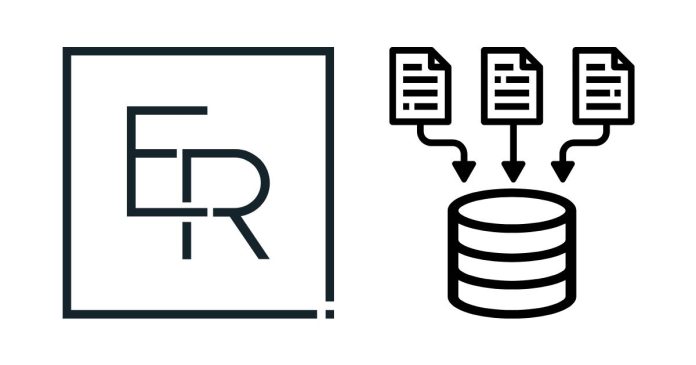The Entity-Relationship (ER) Model is a conceptual framework used to describe and design the structure of a database. It represents real-world entities and the relationships between them in a systematic and visual manner, often using an ER diagram.
Key Components of the ER Model:
- Entity:
- Represents a real-world object or concept that can have data stored about it.
- Types:
- Strong Entity: Exists independently (e.g., Employee, Product).
- Weak Entity: Depends on another entity (e.g., OrderItem linked to Order).
- Attributes:
- Describe properties or characteristics of an entity.
- Types:
- Simple: Cannot be divided further (e.g., Name, Age).
- Composite: Can be subdivided (e.g., FullName → FirstName, LastName).
- Derived: Computed from other attributes (e.g., Age from Date of Birth).
- Key: Uniquely identifies an entity (e.g., EmployeeID).
- Relationships:
- Represent associations between entities.
- Types:
- One-to-One (1:1): One entity instance is associated with one instance of another entity.
- One-to-Many (1:N): One entity instance is associated with multiple instances of another entity.
- Many-to-Many (M:N): Multiple instances of one entity are associated with multiple instances of another entity.
Diagram Representation:
- Entities: Represented as rectangles.
- Attributes: Represented as ovals connected to their entities.
- Relationships: Represented as diamonds connecting related entities.
- Primary Keys: Underlined in the diagram.
Advantages of ER Model:
- Clear Visualization: Provides a graphical representation of data, making it easier to understand.
- Database Design Foundation: Serves as a blueprint for creating relational databases.
- Simplifies Complex Data: Breaks down intricate relationships into manageable components.
Example ER Diagram:
- Entities: Customer, Order
- Attributes:
- Customer: CustomerID (Primary Key), Name, Email
- Order: OrderID (Primary Key), Date, Total
- Relationship: “Places” (Customer places Order)
The ER Model is essential for logical database design, helping bridge the gap between real-world data and database implementation.



